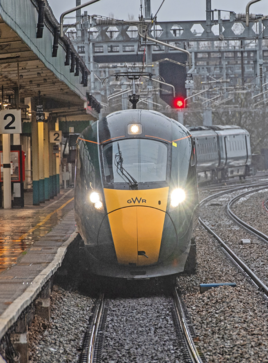Ahoy there, Treasure Island!
With acknowledgement to Tony Mercado, at the time seconded to the Department for Transport as its Technical Director, who coined the term to describe how Britain was conspiring to achieve uniquely high project costs while delivering indifferent quality.
That was in the first decade of this century, when even the simplest of benchmarking showed that costs for basic work such as track or signalling renewal were around twice that of the highest cost economies in Europe.
Things could only get better. Sadly, they got worse! The ‘Railway Credit Card’ mindset that set in after Hatfield fertilised the magic money tree, whose bitter fruit we are now harvesting. There are great people in the new generation of engineers and project managers, but what an uphill struggle lies before them to reverse the bad practices of the past two decades.
Electrification is an excellent current example. If the projects that are under way now can show delivery near to benchmark good practice figures - under £2 million per single track kilometre (stkm) - then the prospect of unlocking a long-term programme is excitingly real.
We saw the significant recovery of sensible engineering decision-making on the last section of the Great Western Electrification Programme, from the nadir of appalling practice driving the reported £4m/stkm previously, as well as similar improvements in elements of the North West work.
In Scotland, a robust approach to all aspects (from scope to specification, then practical design and efficient construction) by client, regulator, asset managers and the supply chain together has also delivered a better result - not good enough yet, but a platform from which continuous improvement can bridge the gap to true affordability. The answers are out there, we just need to want them enough.
We have to recognise that we are sailing against at least four well-established adverse winds, as well as a new fifth one which may or may not be shorter-lasting.
First, the attitude among some (often senior) managers that the railway justifies limitless public finance, because “we’re worth it” or even because of decarbonisation. There are alternatives, and only by being demonstratively cost-effective can we argue our rightful place in the transport system.
The key word is cost-effective. Cheap but inadequate work, with no designs or records, is not what this is about. For example, too much track renewal work has been in the ‘good enough’ category, which is code for ‘it’s good enough to avoid a speed restriction’.
What is being paid for is a major investment that should last decades and be almost maintenance-free for a number of years - so it’s not only too expensive, it’s not effective either. The same people in the client organisation wouldn’t be happy using that approach to a new roof on their house, paid for with their money.
Second, the industry has progressively added more and more costly and time-consuming processes as sticking plaster for failing to invest in genuinely training its people - a continuing legacy of the casualisation of labour post-privatisation.
Nowhere is this more apparent than in the gap between the remaining seasoned supervisors and managers and those who should be following them. Of course, the senior managers can be (and have been) brought in, sometimes beneficially, but focusing on this is like polishing the leaves and admiring the flowers rather than feeding the roots that sustain the plant.
Third, the civil engineering industry is still exhibiting the consequences of the Carillion crash.
At the same time as it became fashionable for clients to off-load project risk, design liability and self-assurance to their contractors, few have the balance sheet to accept these accountabilities. Insurance is expensive, so the only way a contractor can react is to price in the risk - a classic case of client naivety.
The first duty of a contractor is to its Board and shareholders, so this is hardly unexpected. And it is compounded if the client follows the equally fashionable avenue of ‘alliancing’ before it has decided what it actually wants.
To use the domestic house analogy once again: you really wouldn’t contract with a builder based on promises of working collaboratively before deciding what sort of house you wanted built - and then ask nicely if you could have a competitive price. Naivety squared.
Fourth is the serious commercial situation in which many of our traditional designers find themselves.
Since abolition a long time ago of scale fees, there has been a steady depressing race to the bottom through clients parcelling work out to the lowest tenderer.












